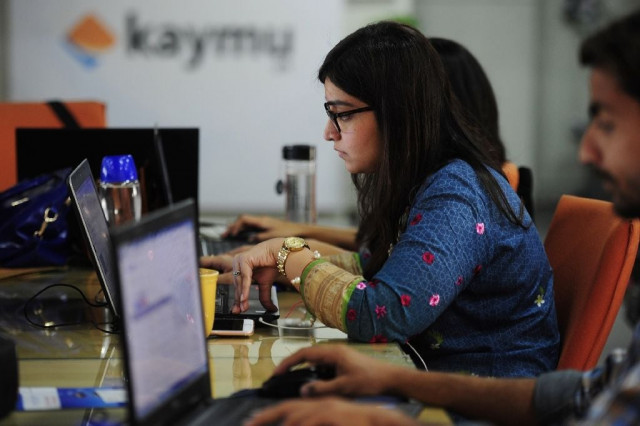Pakistan’s gender digital divide
Political will, robust coordinated efforts key to make technology work for women

When a London School of Economics researcher used the term digital purdah to describe Pakistan's gender digital divide, he did not know how comprehensively he had defined the intricacies and complexities of Pakistan's relationship with technology using just two words.
Beyond the numbers of women with mobile ownership (53% as per latest GSMA figures), internet access and usage (33%), which differs marginally across various national and international publications, the main crux of the problem lies in the fact that women in Pakistan-whether urban or rural-have not been able to exploit the potential of the internet fully.
While those in the realm of true access gap struggle with the first level of the digital divide on ownership and usage of a basic phone or a smartphone, others on the second level of the divide struggle with relevant skills and yet another set with the third level digital divide.
This level might be more frustrating- you have access and skills, but cannot fully utilise the potential due to societal and cultural blockades. Technology-facilitated gender-based violence is the norm so is the exposure to extreme levels of insensitive commentary spanning from personal to professional amplified by almost non-existent, difficult or non-functioning legal mechanisms for reporting.
This leads to women either abandoning the use of technology altogether or starting to get careful around active online participation- basically, observing the digital veil by constraining their online activity and involvement. Another way this is manifested is by using pictures of sceneries, plants, shadows and even other family members on their personal social media platforms.
Every year leading organisations and publications give us numbers on our stark digital divide and while for the rest of the world, their surveys seek questions on access to phones, affordability and skills, for Pakistan (and a few others) a question about family permission is also a part of the question set. This should make us realise how deep the problem permeates.
A male family member's permission is paramount for a woman to use the phone or access any form of technology and the decision to take away the consent at any time is always there too! Many argue this is more prevalent in the non-urban areas but we have seen tech-facilitated violence crop up right in the heart of our urban centres, right in the middle of our most educated and affluent neighbourhoods and extreme disdain for gender and tech in our intellectual and popular media discourse.
How do we address all this- churning reports year after year has not helped, nor has a plethora of conferences, and especially not the uncoordinated efforts across the public, private and not-for-profit sector.
The solution lies in the highest level of political will, a well-coordinated and integrated approach across sectors and most importantly, a robust, well-crafted behavioral change communications to ensure that the work done is no longer hindered by the deeply entrenched societal norms and cultural barriers.
The problem is deep-rooted and would take time but the first step is key. The Digital Gender Inclusion Strategy by the Pakistan Telecommunications Authority which is spearheaded by the Minister of Information Technology herself at the moment might be the first step in the right direction.
It has a detailed agenda with a minister-led multi-stakeholder steering committee with six verticals on access, skills, awareness, security, affordability and data. The real challenge lies in the implementation and putting up a sturdy plan in place which is monitored well and sustained beyond political and bureaucratic switches.
This, and the realisation of commitment by everyone in government, private sector, public sector, donors, academia and citizens. Armchair activism that has happened on gender and the digital divide for long in Pakistan has to be replaced by people willing to take action, do their job and play their part effectively.
Pakistan's economic woes are many and major structural reforms over a long, sustained period are required to make fixes. Women can play a key role in this much-needed economic development, complemented by technology and the opportunities it offers.
But for that, we have to collectively work on building the entire ecosystem well. Women's relationship with technology has to improve for this country; our Digital Future depends on it.
The writer is strategic policy comms and gender expert and teaches internet governance and technology policy at LUMS.



















COMMENTS
Comments are moderated and generally will be posted if they are on-topic and not abusive.
For more information, please see our Comments FAQ